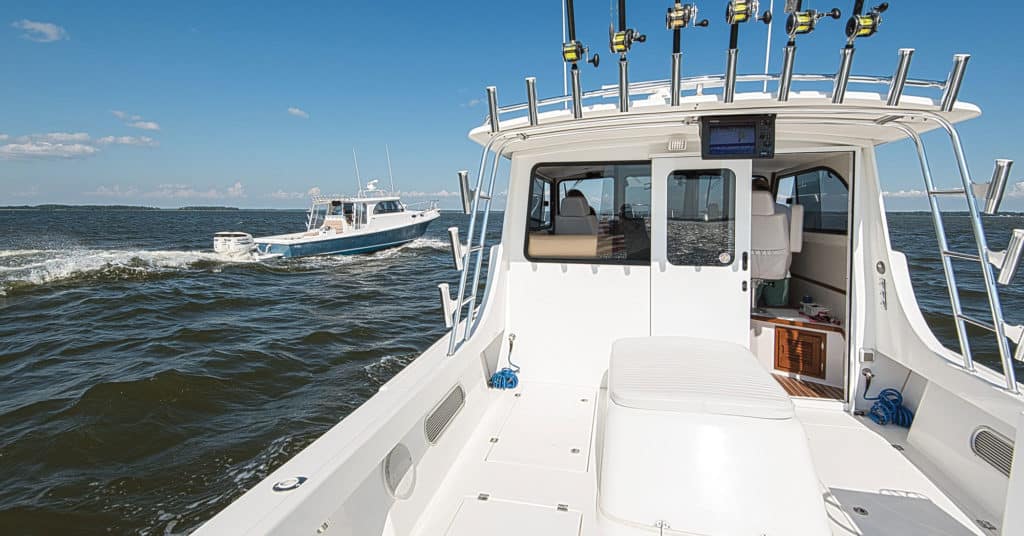
Why does everybody seem to want to put outboards on big boats these days? It looks crazy to hang a bracket with a pair of outboards on the transom of a good-looking, sturdy 36-foot hull designed for work or play. The little propellers on those outboards will never produce the grip on the water of a proper large-diameter wheel on an inboard shaft driven by a modern electronic common-rail diesel. The outboards will burn way more fuel, they’ll blow up driving that big hull, and they’ll ruin the balance.
Won’t they?
Well, when semicustom boatbuilder Bill Judge (judgeyachts.com) showed up in one of his 36-foot Chesapeakes for the Annapolis Fish for a Cure tournament a couple of years ago, it was powered by a pair of 300 hp Suzuki outboards instead of the usual 480 hp Cummins inboard. Was Judge crazy like a fox? There was one way to find out.

The Boat
The Judge 36 Chesapeake is a classic. The 36-by-12-foot hull possesses a lovely flared, bow-proud semi-V Chesapeake deadrise shape. Unlike most Chesapeake boats, it has no keel, though the sharp deadrise extends back about two-thirds of the length before flowing smoothly into nearly flat (4-degree) transom sections. The boat has always run well with 425 to 480 hp Cummins QSB series inboards, using Volvo Penta’s Interceptor boat-trim system to dial in running attitude. Most are rigged with an after helm and rocket launchers for fishing either recreationally or for charter, but there’s room for a dinette and galley in the pilothouse and a cabin forward with a V-berth, hanging locker, and enclosed head for cruising. Judge offers a range of custom layouts.
Though he originally designed the Judge 36 Chesapeake for inboard power, Judge hasn’t built one with a diesel for three years; the new ones have all been powered by Suzuki 300s on brackets — except for the most recent, which runs Suzuki’s revolutionary new DF350A with contra-rotating propellers. We first pitted a 36 with a Cummins 480 hp 5.9L inboard against one with twin Suzuki 300s, but then the opportunity to run one with the twin 350s occurred and we jumped aboard (see below).
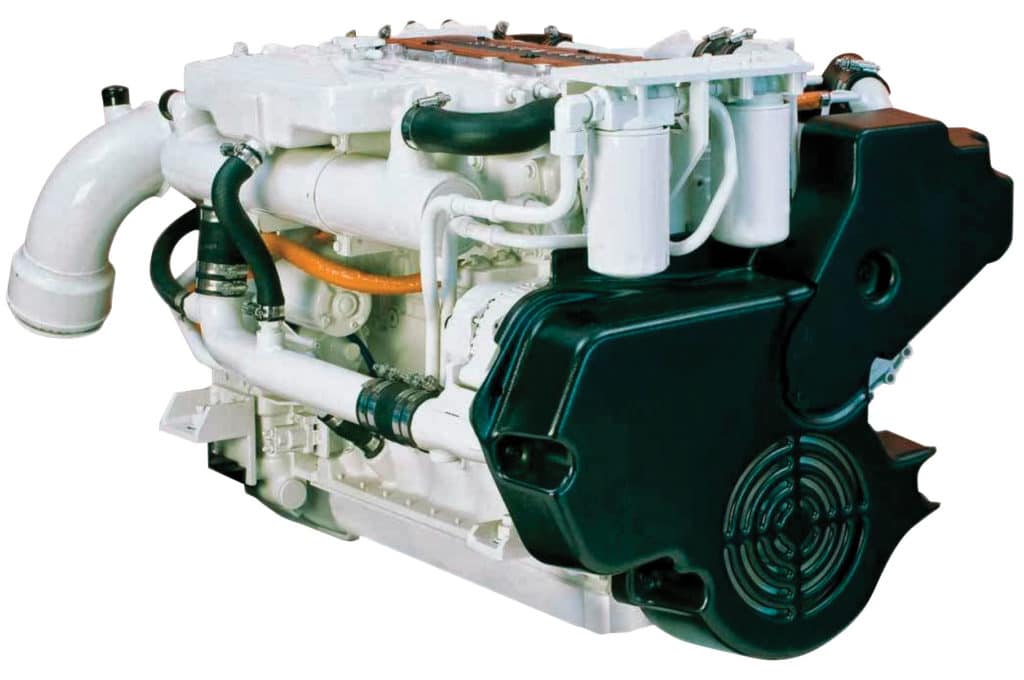
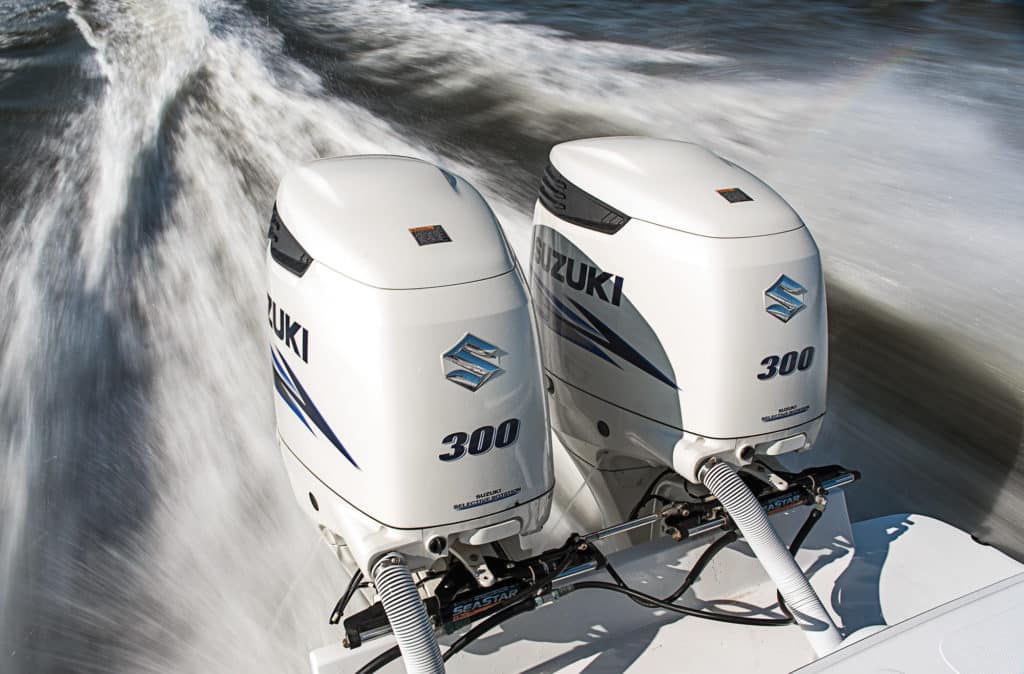
Performance
For the inboard model, we ran Justified, a 2012 inboard. Its owners fish but also like to cruise, so Justified is fitted with a full galley and dinette, an after-cabin bulkhead, air conditioning, and a genset. Its Cummins 480 had 1,450 hours of time when we tested. The owners love their boat and wouldn’t trade, citing its easy motion at all speeds and its fuel economy, which proved the best of our three testers. Running bow-proud at planing speeds of 16 to 25 mph, Justified showed us around 1.8 mpg. Trawler speeds of 8 mph produced 4.5 mpg. Even at wide-open throttle (33.6 mph), it achieved 1.3 mpg. The boat’s isolated and insulated engine box kept sound to a minimum, and as the charts show, noise levels were roughly comparable for both power choices at a variety of speeds.
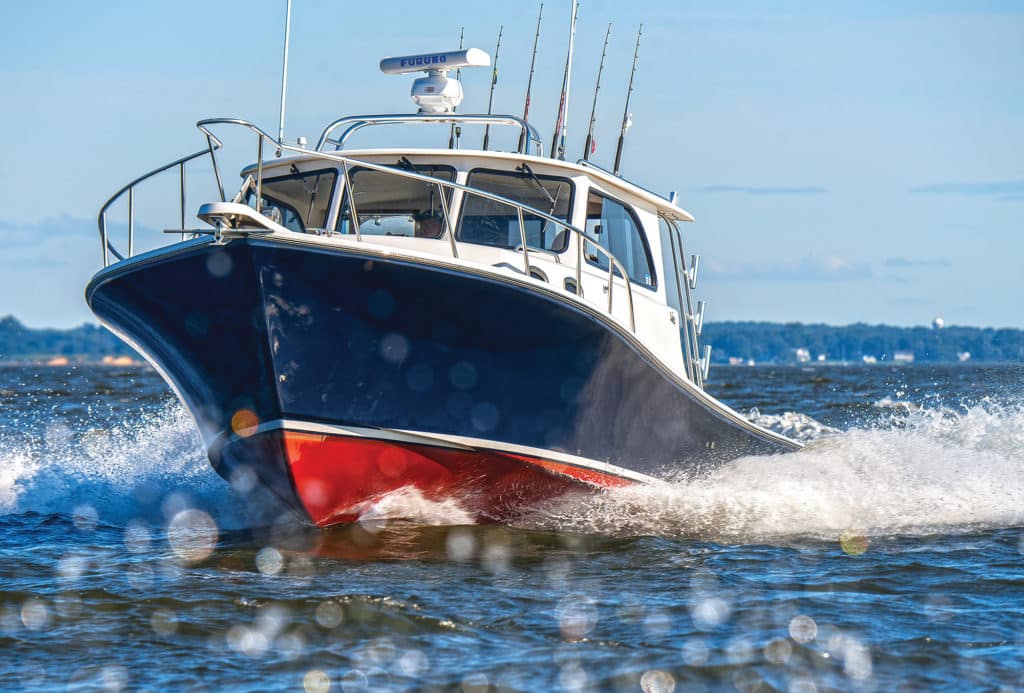
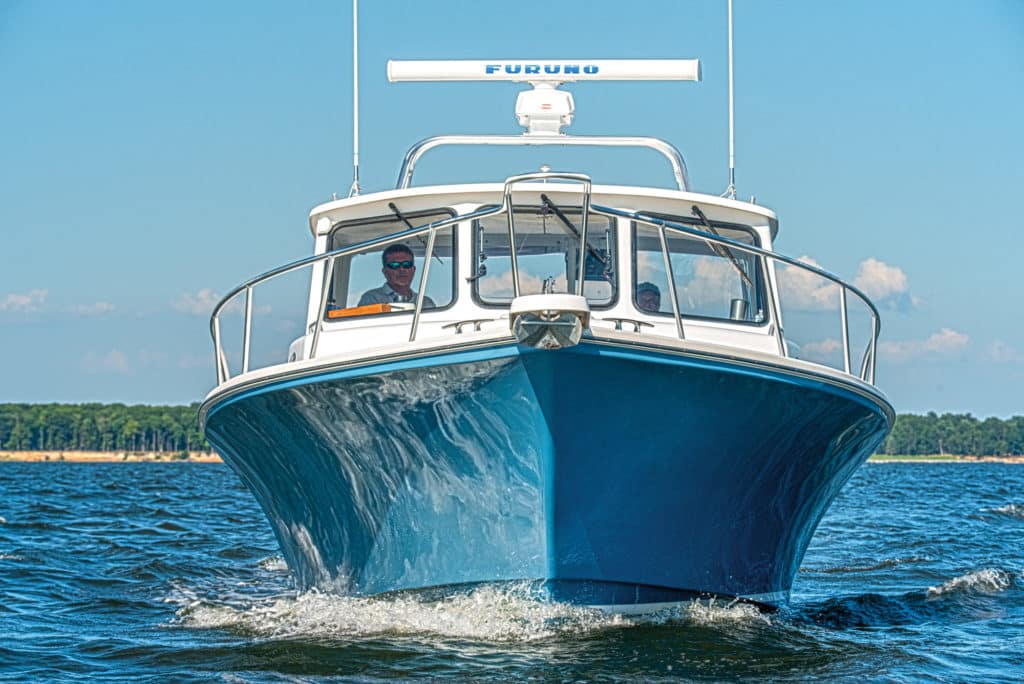
The unnamed 36 with Suzuki 300 engines is Bill Judge’s personal boat, the first that he built with outboards. Three years old, it had about 900 hours on the motors when we tested it. This boat is lighter, rigged primarily for fishing and day-cruising with an open pilothouse. It ran noticeably higher in the water, drier and flatter, with both Interceptors and engine trim available to adjust running attitude to fit conditions. With two 16-inch-diameter propellers in the water, it popped onto plane below 15 mph and fairly flew from there all the way to 43.6 mph. Its “happy speed,” according to Judge, is 24 to 28 mph, returning 1.5 to 1.6 mpg (where the diesel boat netted 1.75 mpg), but it also runs well at speeds in the midteens, where we recorded 1.3 mpg versus 1.8 for the diesel boat, an important alternative for fishing on gnarly days. Gone is the hyper efficiency the inboard posted while cruising at trawler speeds.
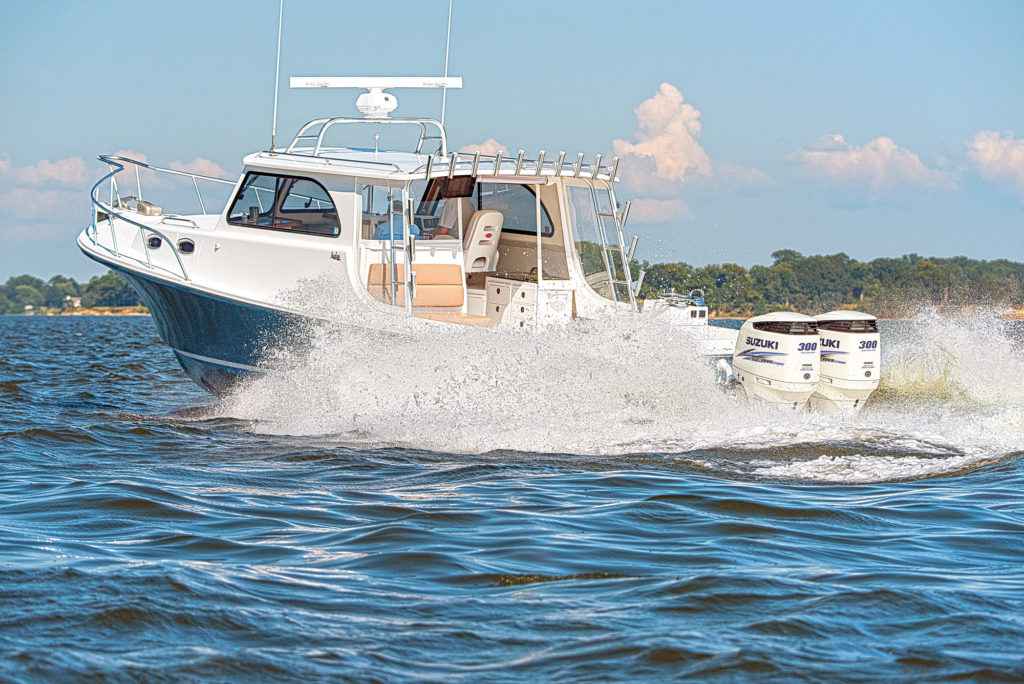
Outboard Versus Inboard
As we began to dig into the pros and cons of the two layouts, though, a broader picture emerged of what it would mean to live with each system over the long term. The first is purchase price. Rigging the boat with twin 300 Suzukis produces a $51,000 savings over rigging with the Cummins inboard. That will buy a lot of fuel; by our back-of-the-envelope calculation, and using current average-per-gallon prices, at least 15 years’ worth at 300 hours of running per year.
But won’t the inboard outlast the outboards? Maybe. But Judge states he has built outboard boats for guides who have happily put over 3,000 hours on the Suzuki engines. That translates into more than a decade for most recreational owners. Yes, the outboards are saltwater-cooled, but modern systems make regular flushing easy with a dockside hose, especially if the boat is kept on a lift. This should assuage the concerns of those who boat in salt water.
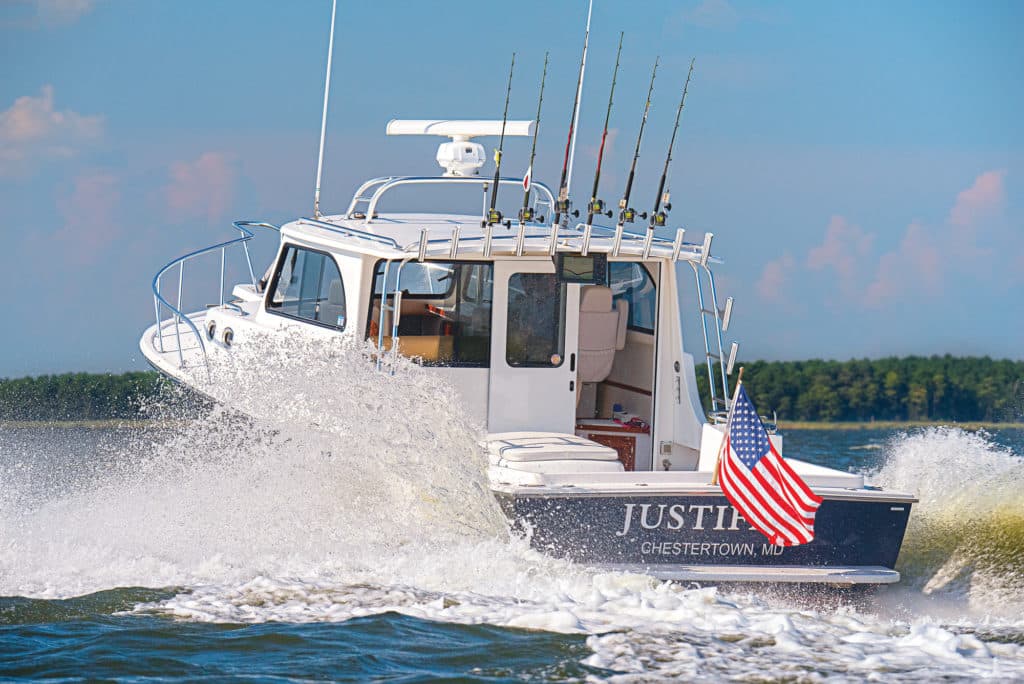
Another huge difference is ease of maintenance. The cost for oil and fluid changes is comparable until we consider the inboard’s cooling system, which requires not only periodic changing but also winterization. Fouling a line or grounding and damaging a propeller requires a diver at least and perhaps a haul-out for the inboard, while tilting an outboard makes solving most problems much easier. For major repairs, the ability to swap out a gear case or even change engines on the bracket gives the outboard boat an obvious advantage. Obviously, twin outboards provide redundant security for get-home power versus a single inboard.
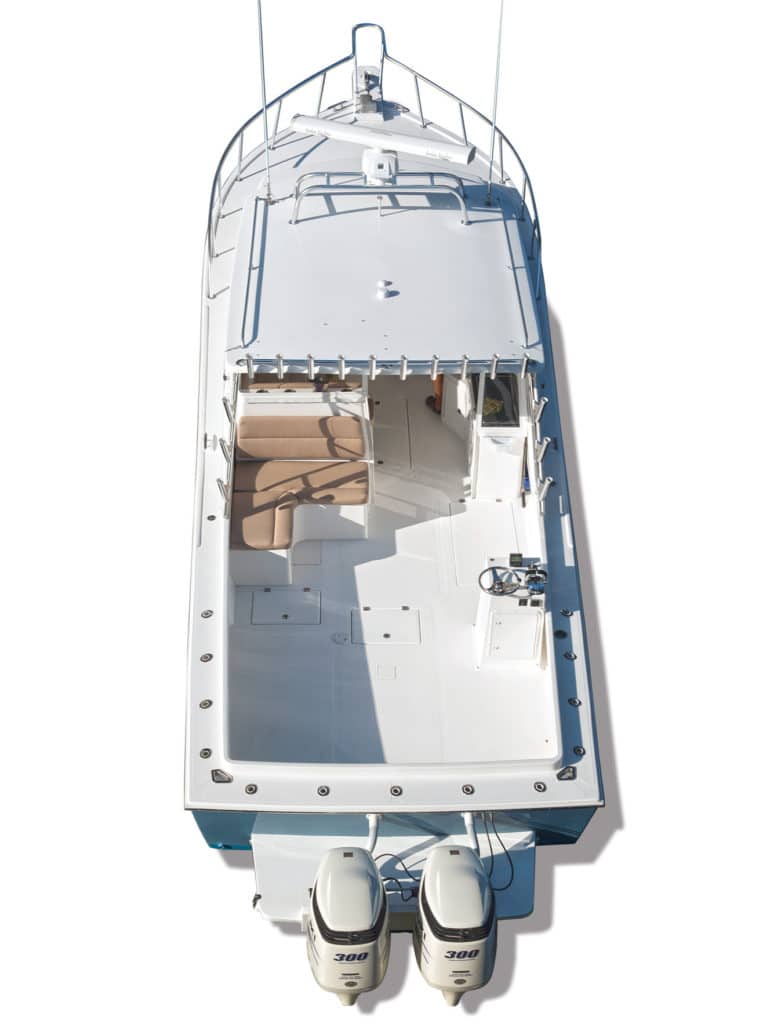
Outboard
* Lower initial cost
* Higher cruising and top speed
* Huge open cockpit adaptable for many uses
* With proper maintenance, an engine life of 3,000-plus hours
* Ease of winterization, maintenance and repairs
* Zipwake trim system optimizes running angle for efficiency and comfort
* Two engines provide redundancy Low Points
* Lower fuel efficiency
* Modestly lower service life
* Harder to handle fish around transom Price: $289,000 (with test power) Jay Flemming
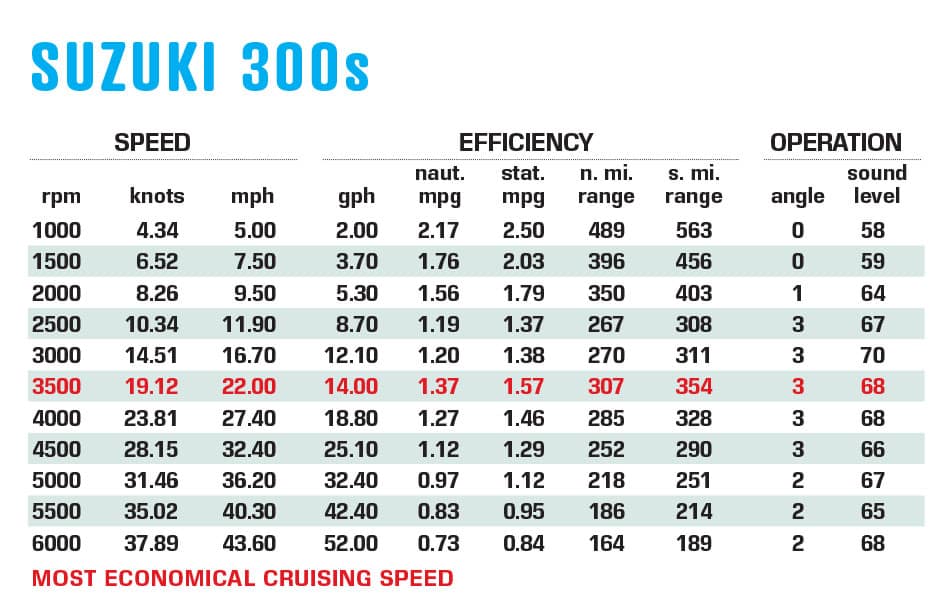
Engine: Twin 300 hp Suzuki outboards on an Armstrong transom bracket
Prop: 16″ x 17″ 3-blade stainless steel
Gear Ratio: 2.08:1
Fuel Load: 160 gal.
Water Load: 30 gal.
Crew Weight: 600 lb. Boating Magazine
Fishing is a mixed bag. Judge much prefers the Suzuki option for setting trolling speeds electronically, in contrast to the trolling valve needed on the inboard. Handling a big fish around two outboards on a bracket, however, is more difficult than over the inboard’s clear transom. One alternative to help the 36’s outboard is a transom door. On the drift in seas, the inboard has an easier motion due to the low and centered weight of the engine, but the outboard is not uncomfortable.
The outboard is more trim-sensitive, but prudent adjustment of speed and the Interceptors goes a long way in keeping both the hull and passengers happy. As always, it’s valuable to spend some time learning the hull’s shape and then pay attention to what part of it is meeting the seas while running. To help with that task, Judge now offers to install the Zipwake Interceptor System that automatically optimizes the running trim at all speeds. This worked impressively on the 36 powered by the Suzuki DF350As we ran.
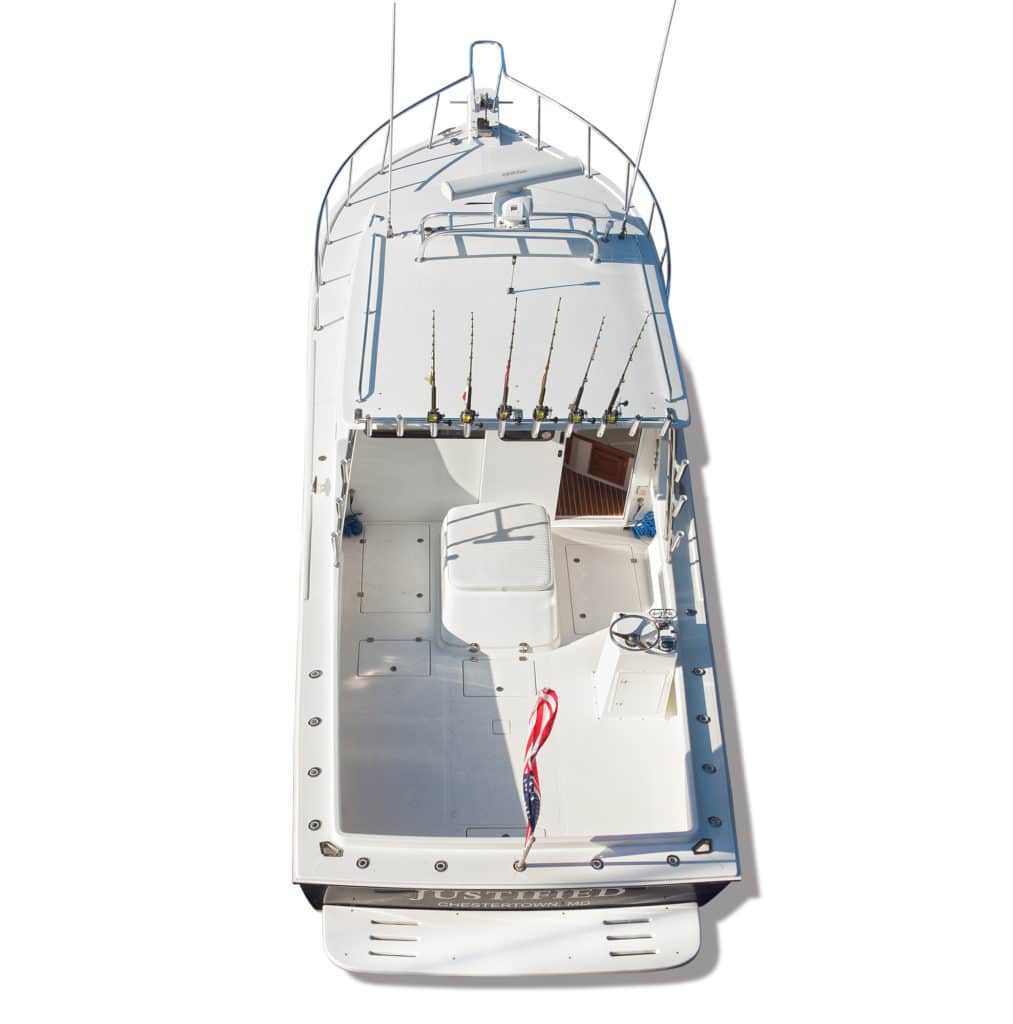
Inboard
* Higher fuel efficiency
* With proper maintenance, an engine life of 6,000-plus hours
* Engine weight, centered and low, produces easier motion when drifting
* Easier to handle fish around transom Low Points
* Higher initial cost
* Lower cruising and top speed
* Because the boat sits lower in the water, she throws more spray
* Engine box takes up cockpit space
* More complex winterization, maintenance and repair
* Need for trolling valve Price: $340,000 (with test power) Jay Flemming
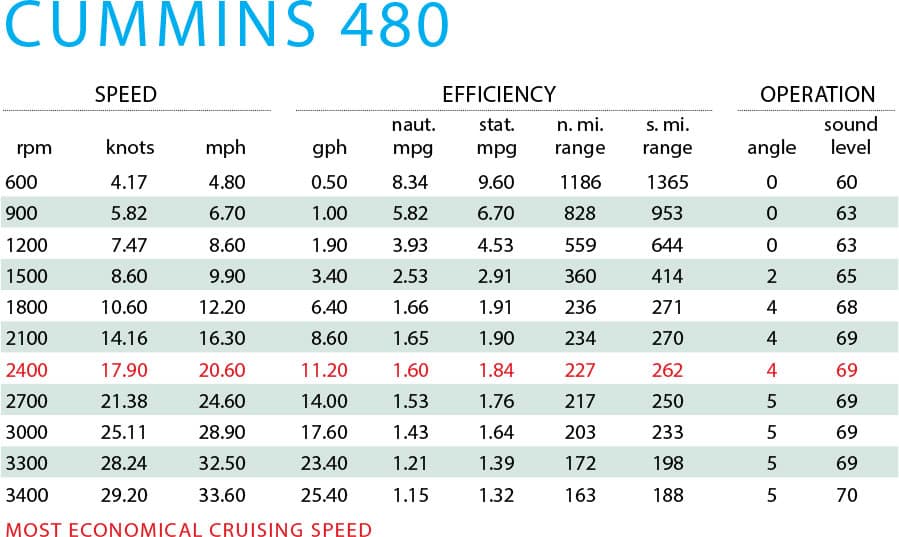
Engine: 480 hp Cummins QSB 5.9 common-rail diesel inboard
Prop: Nibral 22″ x 24″ 3-blade
Gear Ratio: ZF gear 1.75:1
Fuel Load: 145 gal.
Water Load: 30 gal.
Crew Weight: 600 lb. Jay Flemming
The bottom line? Think how you want to use a boat like the 36 Chesapeake. For a long-term investment in fishing, family day-cruising, and weekend trips, the outboards make a lot of sense, especially with that big difference in price. If you’re going cruising with a side of fishing, though, the diesel inboard with a cabin bulkhead and genset like Justified still makes a lot of sense, especially if you like to cruise at trawler speeds. So, the true winner depends on how you like to boat.
Either way, we’d say Bill Judge really is crazy — like a fox.
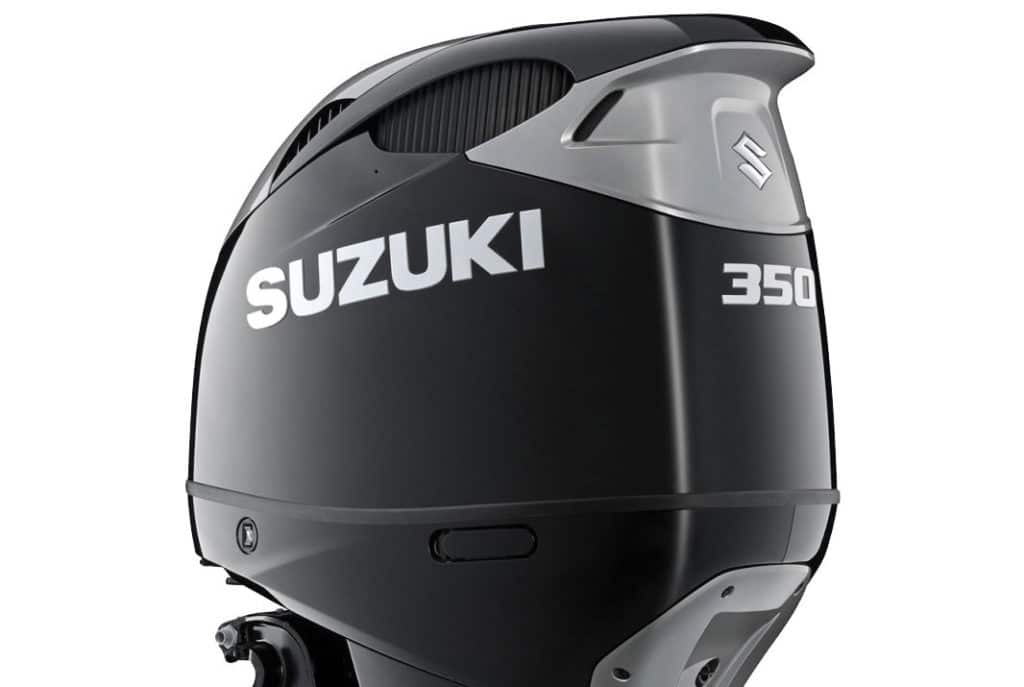
Judge 36 Chesapeake With Suzuki DF350As
Engine: Twin 350 hp Suzuki outboards on an Armstrong transom bracket
Prop: Dual 16″ x 22″ 3-blade stainless steel
Gear Ratio: 2.29:1
Fuel Load: 136 gal.
Water Load: 30 gal.
Crew Weight: 420 lb. Price: $305,000 (with test power) Suzuki
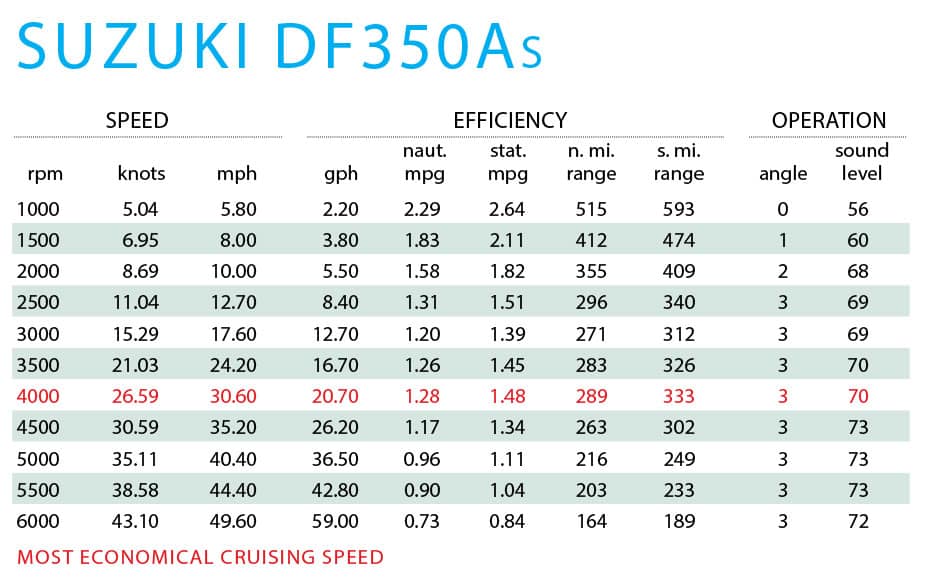
Judge 36 Chesapeake With Suzuki DF350As
As press time approached, we got in a quick sea trial of the newest 36 Chesapeake, an open fishing version powered with Suzuki’s revolutionary DF350A outboards and featuring the auto-trimming Zipwake system. It’s a rocket, touching 50 mph at wide-open throttle, but it cruises almost as efficiently as the boat with 300s at speeds more realistic for coastal conditions. The contra-rotating propellers lift the hull higher, increase acceleration, track precisely at all speeds, and offer better maneuverability. With them, the Judge’s price is still $35,000 below the inboard diesel version. Read our complete test of Suzuki’s DF350A at boatingmag.com/suzuki-df350a.









